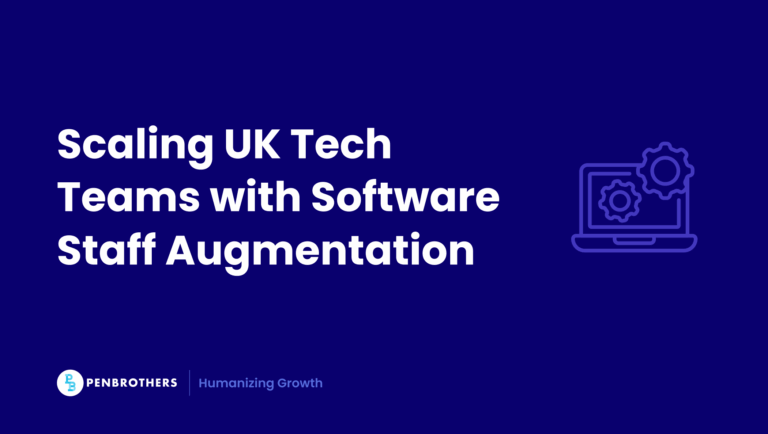Hiring a data analyst isn’t just about filling a vacancy. It’s about unlocking a critical capability in your organization. Done right, this hire empowers teams to make better decisions, faster. Done wrong, and you risk burying insights under complexity, or worse, hiring someone who can’t deliver.
Data has become one of the most valuable assets a company can leverage. But without someone to clean it, analyze it, and translate it into plain English, that asset stays locked away. That’s why crafting a strong data analyst job description is your first strategic move. It attracts the right candidates. It sets the right expectations. And it filters out mismatches before they reach your inbox.
According to the U.S. Bureau of Labor Statistics, employment in data-related roles is projected to grow over 23% between 2021 and 2031, nearly five times faster than the average for all occupations of 5.3%
What Does a Database Analyst Actually Do?
A data analyst turns raw numbers into business value. They sift through databases, reports, and APIs. They clean the mess. They spot trends. Then they build dashboards or deliver narratives that answer the business’s biggest questions.
Their tools? SQL, Python, Excel, Tableau, Power BI. Their stakeholders? Marketing managers, product teams, finance leaders, C-suites. Their mission? Turn chaos into clarity and support decision-making across departments.
Typical responsibilities include:
- Collecting and cleaning data from multiple sources
- Analyzing trends to surface opportunities or problems
- Creating easy-to-digest reports and dashboards
- Collaborating with teams to define KPIs and interpret results
- Supporting predictive modeling and advanced analytics
Among professional developers, SQL remains the most-used language (used by ~52%), followed closely by Python(~45%) in 2023. That means any serious candidate should demonstrate mastery of both.
Curious how data analyst roles compare to similar ones like database administrators? Explore the differences and overlaps to make sure you’re hiring the right role.
Key Elements of an Effective Data Analyst Job Description
A job description should do more than list tasks. It should position the role within your organization’s strategy. It should speak directly to qualified candidates and encourage them to apply. Here are the critical sections:
1. Job Title & Summary
- Use simple, searchable titles like “Data Analyst,” “Junior Data Analyst,” or “Senior Data Analyst.”
- The summary should explain the purpose of the role and who the analyst will work with.
- Highlight how the role drives decisions and adds value to your business.
2. Core Responsibilities Be specific. Vague phrases like “analyze data” won’t cut it. Include:
- Collecting, cleaning, and validating data
- Building dashboards and reports with tools like Tableau or Power BI
- Running statistical analysis or predictive modeling
- Collaborating with department heads to frame business questions
- Presenting actionable insights to non-technical audiences
3. Required Skills & Qualifications Split these into three categories:
- Technical Skills: SQL, Excel, Tableau, Python (or R), statistical methods
- Soft Skills: Communication, critical thinking, problem-solving
- Nice-to-Haves: Experience in your industry (e.g., fintech, healthcare), familiarity with tools like MicroStrategy or Looker
McKinsey reports that companies that are “data-driven” are 23 times more likely to acquire customers, 6 times more likely to retain them, and 19 times more likely to be profitable (source). Your analyst is your advantage.
4. Salary & Benefits
- Include a competitive range. Candidates often drop out when salary is not disclosed.
- Mention benefits: health insurance, bonuses, L&D budgets, remote allowances.
- If you’re hiring offshore or remote, explain how compensation compares locally vs. globally.
5. Work Environment & Remote Setup
- Is the role remote, hybrid, or onsite?
- Are working hours fixed or flexible?
- Will you provide equipment or a setup allowance?
- How often are cross-timezone meetings expected?
According to LinkedIn’s Economic Graph, in February 2022, remote jobs received 50% of all applications, despite representing fewer than 20% of LinkedIn’s job postings. This highlights the strong candidate preference for remote roles.
Essential Skills and Experience for a Data Analyst
The best data analysts don’t just code or build charts. They connect the dots between data and business value. This section helps you identify what separates an average candidate from a great one.
Technical Expertise
While the stack may vary across companies, several core skills consistently set high performers apart:
- SQL & Databases – Whether it’s MySQL or PostgreSQL, the ability to extract, clean, and join large datasets is foundational.
- Excel / Google Sheets – Still essential for agile, on-the-fly analysis. Pivot tables, lookup formulas, and macros go a long way.
- Data Visualization – Fluency with tools like Tableau, Power BI, or Looker helps translate complexity into decisions.
- Programming – Python (especially pandas, NumPy, Matplotlib, Seaborn) is widely used for automation and statistical analysis. R remains relevant for research-heavy roles.
- Statistical Literacy – Comfort with regression, clustering, forecasting, and A/B testing is critical for analysts involved in experimentation or modeling.
Soft Skills That Actually Matter
The difference between an average analyst and a business partner? Communication.
- Critical Thinking – Asking the right questions often matters more than rushing to answers.
- Communication – Being able to present insights in plain language is non-negotiable.
- Attention to Detail – One incorrect data point can mislead entire teams.
- Collaboration – Great analysts build trust by delivering value to marketing, product, operations, and leadership, not working in isolation.
Does Industry Experience Matter?
Sometimes, yes. In highly regulated sectors like finance, healthcare, or e-commerce, domain knowledge speeds up onboarding and sharpens interpretation.
If your business relies on specific KPIs, niche platforms, or regulatory standards, experience in a similar space can help new analysts deliver impact faster.
Check out their success stories to get proof of their expertise like how Wilfred Guiriba went from virtual assistant to leading data-driven growth. Read his story here.
How to Assess Candidates Effectively
A fancy CV doesn’t always mean the right fit. Instead:
- Prioritize real-world projects over certificates.
- Use test projects or case studies to evaluate analytical logic and storytelling.
- Run technical screens for tools that actually match your stack.
- Don’t overlook soft skills, especially their ability to influence non-technical stakeholders.
If you’re unsure where to start, use these data analyst interview questions to screen for both technical depth and business sense.
According to McKinsey, companies that are data-driven are not only 23 times more likely to acquire customers, 6 times more likely to retain them, but also 19 times more likely to be profitable compared to their less data-savvy peers
Tips for Writing a Job Description That Attracts the Right Candidates
Too many job descriptions are laundry lists. That won’t cut it in a tight data talent market. Instead:
Be Clear About the Business Impact
Don’t just say “analyze data.” Say why it matters. Does this analyst help reduce churn? Optimize marketing spend? Improve forecasting?
Top candidates want to know how their work will drive results. Link responsibilities directly to business outcomes.
Example: “Work with the Growth and Product teams to uncover conversion barriers and inform A/B testing strategies.”
Great analysts thrive in environments that value data integrity. If you’re outsourcing or managing distributed teams, see how to protect your data assets effectively.
Customize, Don’t Copy-Paste
Generic templates scream “we didn’t think this through.” Customize the job summary, responsibilities, and tools to reflect your actual needs, not what you think sounds impressive.
Tailor the language and focus for your industry. If you’re a fintech startup, say so. If you’re dealing with B2B data pipelines or e-commerce platforms, say that too.
Focus on Growth and Learning
Ambitious analysts aren’t just looking for a job, they’re looking for a place to grow.
Mention mentorship, exposure to cross-functional projects, or access to training budgets. Highlight what makes your data team exciting and how this role contributes to that momentum.
Avoid: “2 years required, must know everything.”
Try: “Ideal for analysts ready to level up in a fast-paced, data-driven team.”
Limit the Tech Stack to What You Actually Use
Many companies throw in every BI and analytics tool under the sun, Tableau, Power BI, Looker, Snowflake, Redshift, Metabase, etc., just to cover all bases. That’s counterproductive.
Stick to 3–5 key tools that your team actually uses. It sharpens your candidate pool and shows you’re serious.
Don’t Over-Index on Keywords, Prioritize Clarity
Yes, your job description should include the primary keyword (“data analyst job description”) for SEO purposes. But don’t let that lead to keyword stuffing or unnatural phrasing.
Google rewards clarity and relevance. So do job seekers.
Include a Strong Call to Action
If you want them to apply, make it easy. Be direct about next steps.
“Apply with your resume and a short note about the last data problem you solved. We review every submission and respond within 7 business days.”
This tells candidates what to do and builds trust.
Reflect Your Company’s Culture, Not Just the Job
Is your team async-first? Do you encourage experimentation? Are most of your team members offshore?
Weave in cultural cues throughout the description. Top candidates are assessing you just as much as you’re assessing them.
Download the Free Data Analyst Job Description Template
Need a head start? We’ve created a ready-to-use template that covers everything from responsibilities to benefits. It’s structured, flexible, and optimized to attract the right data talent worldwide.
Free Data Analyst Job Description Template
This template includes:
- Role summary
- Detailed responsibilities
- Required and preferred qualifications
- Work setup notes (including remote policies)
- Compensation structure examples
Final Thoughts
Writing a strong data analyst job description isn’t an HR task. It’s a growth move. The right analyst can empower your entire team to think faster, act smarter, and reduce risk through evidence-based decisions.
At Penbrothers, we help growing companies around the world find and hire offshore data analysts with the skills, experience, and mindset to do just that. We remove the barriers of geography and give you access to a world of talent.
So whether you’re scaling your first data team or adding your tenth analyst, start with the right description. Let the right people find you.
Need a simpler task like data entry handled first? See how outsourcing data entry helps your analysts focus on high-impact work.
Or need help hiring your next data analyst offshore? Let’s talk.






